It was November 2017. I was on a game drive at Amboseli Safari Park next to the snow capped Mt. Kilimanjaro in Tanzania. The dead volcanic mountain loomed large in the landscape. The Maasai tribe call it the abode of God. Climbers from different parts of the world assembled in Moshi village. I met a team from Mumbai, who had managed to break the path of moderately difficult climb and had a glimpse of the fiery crater of the dormant volcano, were in gay mood and proudly heralding their prowess.
Through the rust-colored bush tufted plains of sunburned an arid savanna grassland, shaggy-headed, green-robed baobab trees stood isolated. We waited in silence watching a leopard sleeping in the cool shade of an acacia tree wearing a black spotted yellow robe. This cute killer when it embraces an antelope, splits its heart. Unlike some species of antelope like Kudu, Impala, Gazelle, WaterBuck, Springbuck, WartHog were nibbling in the carpeted grassland. My vision was drawn to a herd of dark-gray elephants, habitually hiking in their lifelong march led by a gigantic tusker.
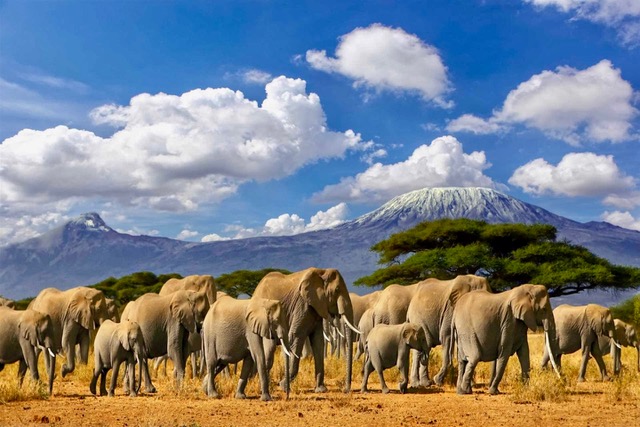
With horns like curved daggers, an array of wild buffalo crossed the dirt and dusty track roaringly littering in the ground. Hyenas trotted around in anticipation to scavenge the dead, killed by other predators. An athletic cheetah was frantically looking for prey, as her cubs were hungry. Zebras wearing black and white band of pajamas were wandering around cautiously.
The turf was dry in this part of the animal kingdom, but the other side of the valley was green. Waiting for another tantrum, the migrating procession was about to start at any time. Striped equines stood on high alert to save their throat from the lion’s sharp teeth and claws. Facing opposite directions to each other, everyone was accustomed to take their own turn of guarding others.
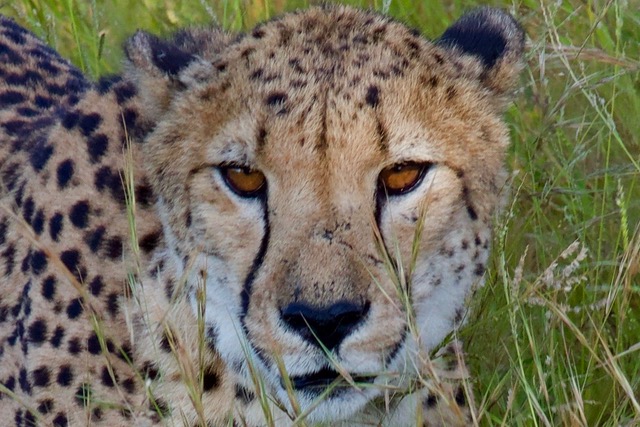
The cub of a wild beast was sucking at its mother’s udder. Near the safari trail, a pride of iron-limbed lions was relaxing on the grassy bush. Lion, the king of the jungle, also lives here. Vultures of different breeds were flying around in the sky. There was a carcass in their sight. After completing the Amboseli’s voyaging, we made a move further north beyond Nairobi in Kenya to reach Lake Nakuru.
It was an arduous overland journey of ten hours. Finally, we crossed the immigration border of two countries, and rested overnight at the caravan camp in Nakuru town. The next day, in the dark and sleepy morning we decamped and headed for Lake Nakuru to discern an overwhelming charm of flamingos. All the streetlight poles along the route were flamingo shaped. Every year hundreds of thousands of tourists flock around the lake to witness the dreamy beauty of the pink colony, where lanky two-legged flamingos gracefully performed their wading dance in the shallow waters of Nakuru– a paradise for birds.
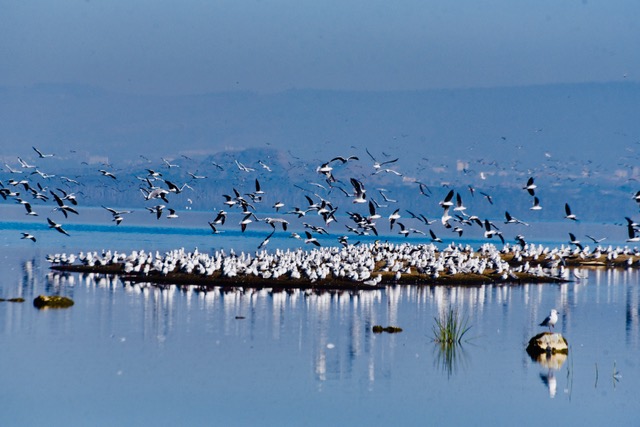
Caroline Mbwebia, Nakuru’s chief female ranger, said, “Due to heavy rains in rift valley in 2012, flamingos left Nakuru because the water level rose. The abandoned Lake was closed to tourists. Betrayed by the flamingos, local Kikuyu and Kalenjin tribes were in economic turmoil. Influx of tourists was the only hope for them.”
Like drifting pink clouds, flamingos glided off in thousands and camped in the nearby lakes of Bogoria and Baringo and did not return. Another cause for concern was a large group had migrated across the Atlantic to other continents. They prefer ankle-deep water as natural habitat in tropical climates. They must have found a similar ambience somewhere. And after a few years when that region was washed away by rains, they again left their overseas base and returned to their original homes. When we arrived, the birds were comparatively smaller in number, and hadn’t started coming back fully. Still, we were pleased with whatever little quota we had there. Even the comparatively small number created a magical feast for the eyes.

Suddenly, from out of nowhere, a flock of pink colored children of God made a dash and descended the stairs of heaven, landed, and settled into the waters of the lake. It was a welcome surprise for us. They were in noisy rejoiceful honking, and we were astounded by the elegance of their feathers. Long slender thongs, crooked necks, curved beaks, some were dancing in coquettish rhythm. A social grouper, huddled together in the clear turquoise water, ingested on dye-solubilized seeds, algae, other plants, and gnats.
They were pink because of pigment. Some of them are standing on one skinny leg while sleeping as if doing yoga exercises, but not falling into a drowsy state, like what a rooster does in winter. The purpose was to preserve body heat in cold water. Despite being a peaceful creature, two rowdy birdies start fighting each other dejectedly entangling their beaks to get the right of pasture. Flamingos are unique, most popular among the feathered souls. They are not endangered and exist in good numbers. When they fly, they cover the face of the sun.
Also read: Backwaters of Kutttanad
In ancient Rome, aristocrats used to feast on flamingo tongues with vin ordinaire. It was a delicacy, and an extreme luxury. Even nowadays whole birds are served as roasted barbecue at lavish banquets of Rome’s nobility. So, this aquatic migratory bird is a target of poachers. Its feathers are sold at high prices too. Both the cadre of male and female flamingos can produce crop milk from the digestive tract without having a mammary gland. This protein and fat-rich milk provides nourishment to the chicks. Flocks of crab-plovers were flying by, relatively pale in color; lesser-flamingos were in rows stomping their feet and searching for life on the lake floor. There were numerous, nearly 500 species of birds that made their habitat in the lake. Pelicans were few.
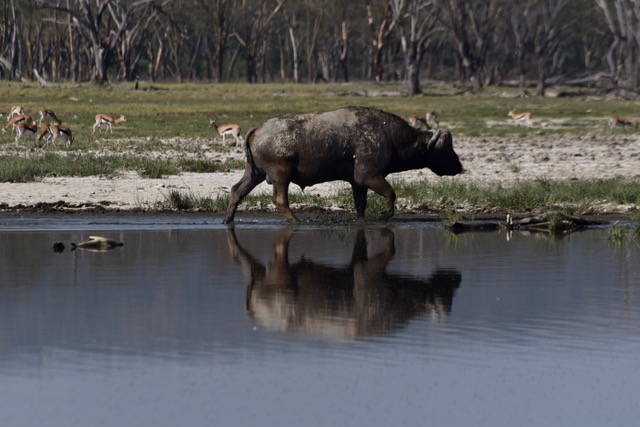
Lake Nakuru is an ideal place to see the bi-horned rhinoceros, Africa’s endemic animal and quite a few of them were grazing around. Their numbers have declined alarmingly in the last few decades due to indiscriminate poaching. Ninety-five percent of Africa’s rhinos have been killed in the last fifty years by poacher Afrikaners and illicit money made. Chinese rhino horn traders are allegedly hand in glove with local poachers as well, because rhino horns are in great demand in that country. Besides, the leather produced from rhino skin is extremely popular among the elite worldwide and are used to make handbags. These illegal activities and the tacit support of a corrupt administration is gradually pushing this magnificent beast towards extinction.
Two black water buffaloes were drinking water in the lake. A group of perching yellow and red-lipped oxpeckers eating insects from their ears. Rough coated hyenas were roaming threateningly by the lake. The absent-minded flamingo was easy prey. They are not as clever as other birds.

A perpetrator baboon who was waiting at the edge of the lake for an opportunity to catch a nesting flamingo, suddenly made a move, making splashing noises in the water. The birds were not at a safe distance, and got scared. Flapping wings of flying flamingos created a pink pandemonium and shook the sky. The calm surface of water rippled and changed the dimension of the lake. Baboon’s attempt somehow failed. He left the scene expressing frustration for a while by calling ‘Yak Yak Ohau Ohau’. Baboons are native to Africa. They are basically vegetarian but become carnivores when necessary. Birds, small antelopes, and sometimes baby baboons are also killed and consumed by adult baboons. A rare black rhino had been sighted; news came through walky-talky. I did not have appropriate zoom lenses. Those who had, hurriedly went to the open-top of jeeps and took position.
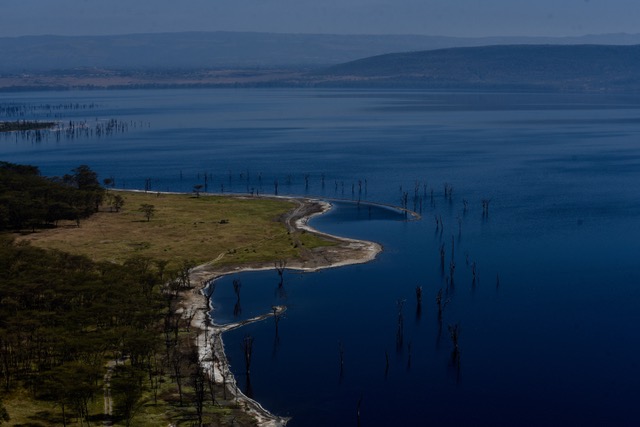
The rhinoceros was in binocular distance. He came out of the bush and was grazing in the field. One guy with a heavy professional 600mm zoom lens was snapping pictures to others’ envy. The photographs I had taken on my 300mm were not good. But I felt lucky to see such an animal with naked eyes which is on the way to disappear from the earth forever. It is a strange creature. It restrains themselves from mating, if they do not find suitable environment to give birth. They are expatriates in Nakuru, but the climate here is conducive for living. Hopefully black rhino population is growing at this part of the World Heritage site.
After spending an amazing three-hour on the shores of the lake, I took a deep breath. I had come here with a longing desire to see the enchantment of the delirious dancing of flaming feathers. As it happened, I was not fully flabbergasted with the flamingo lingo, but what I had eyed, I would cherish for the rest of my life.
All images used in this article are by the author.
Pijush Roychowdhury, a globe trotter who frequented 63 countries is a leading travel writer, published extensively and has been an awardee of "Kalom" as the best travel writer of 2020.





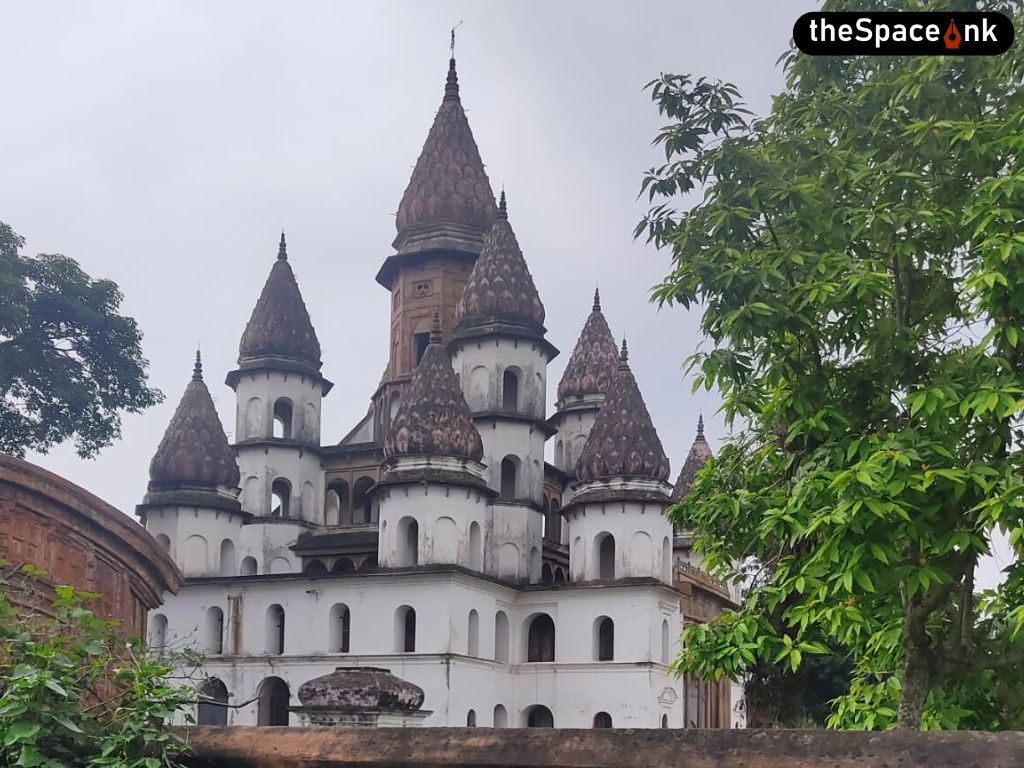
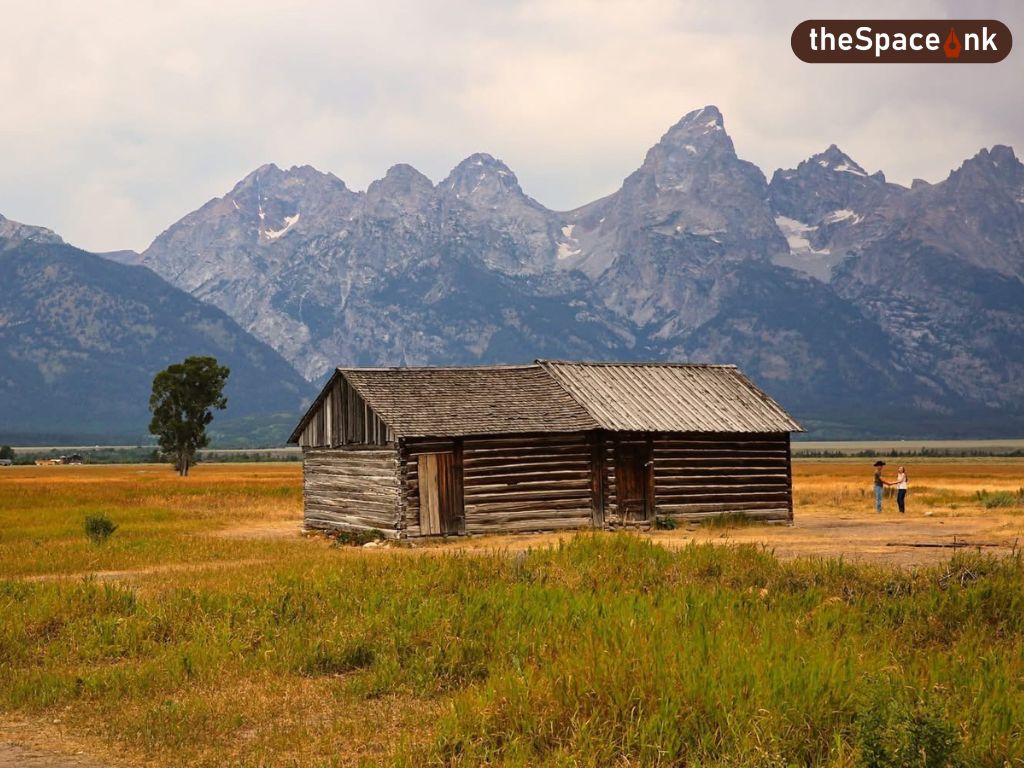
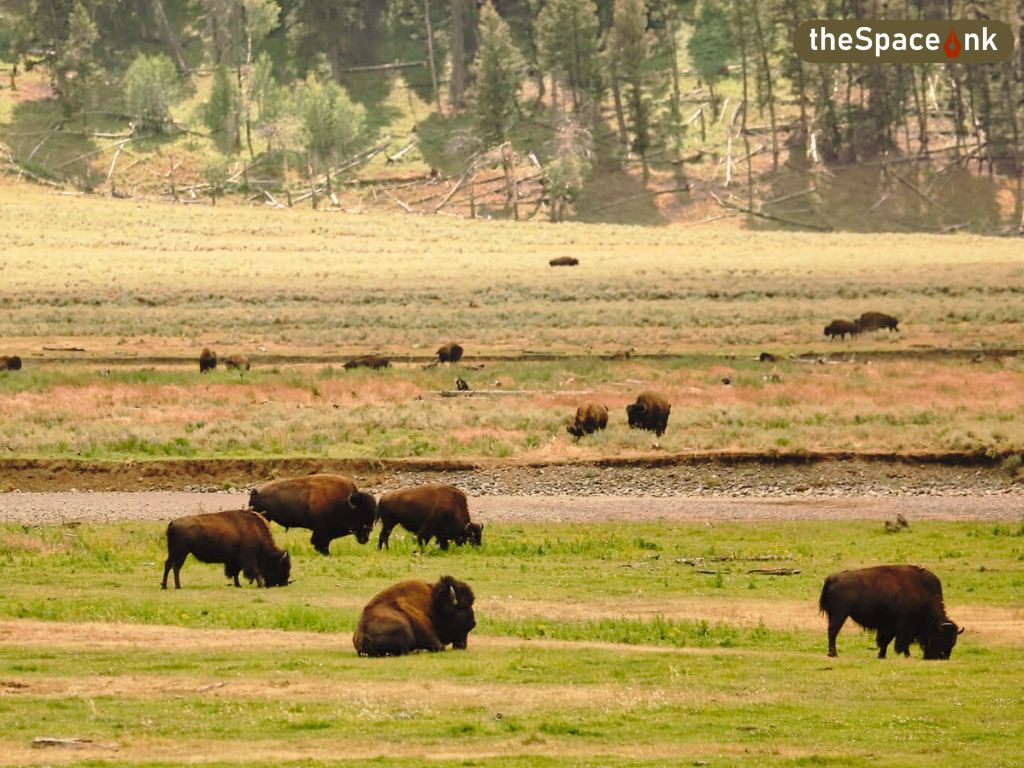
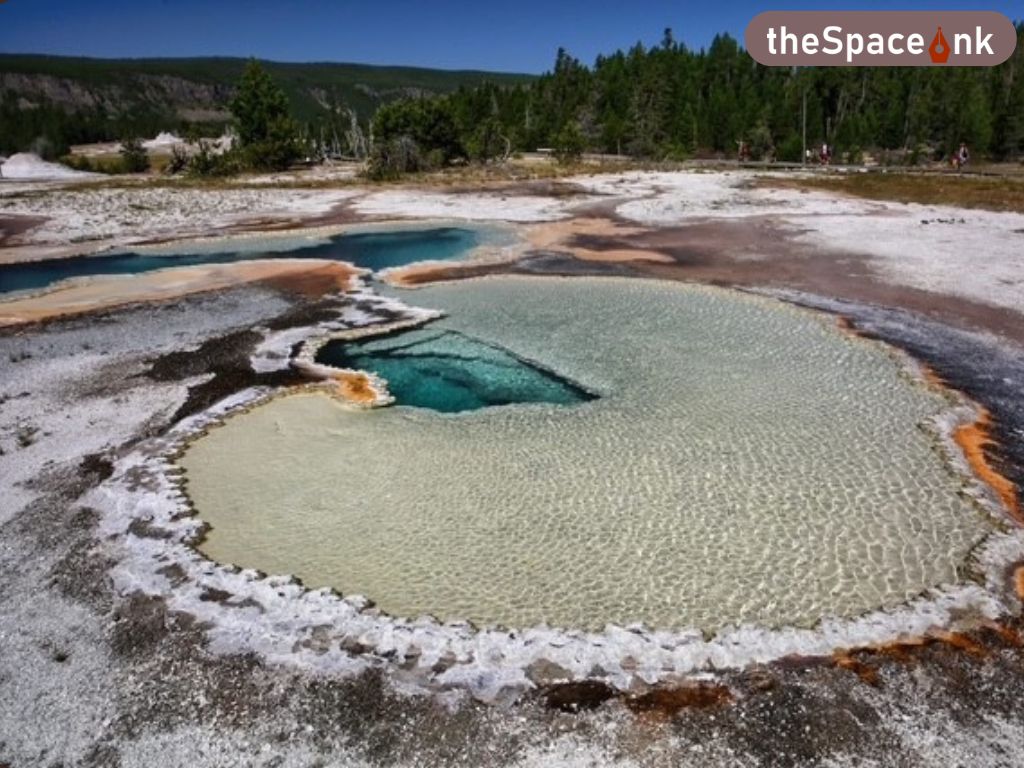
9 Responses
Nicely presented a situation which is unknown to me.thanks
Brilliant piece of travel writing , this time on flamingos.
I knew that Pijush would be apt in wtining his travel experiences on English. I’m not surprised, but very happy to see him penned down for many more readers.
wonderful I came to know about the place. Want to read more. greetings
Excellent punting of the wilderness with magical power of words .. the whole scenario seemed to have been unfolding before my eyes while I was reading the article . Thanks for sharing such an amazing experience.
Well-written piece of work
No word…just applause! Photographs are excellent.
A perfect document on d beautiful Nakaru lake, it’s feathered guests & other wild animals, well crafted by d renowned globe trotter Pijush Roy Choudhury, in his usual signature style of expressing himself.
Very interesting account of his expedition to that place.
Best wishes to this wonderful person.
Really awesome writing & photographs.